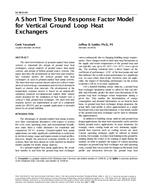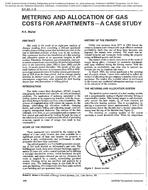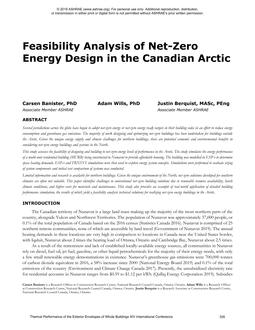Click here to purchase
Transmission of exhaled small particles from one person to another in an indoor environment can take place, both in a direct way (in the microenvironment around the persons) and via the room air distribution. The impacts of these transmission routes for two persons are investigated in details by evaluating the exposure to gaseous substances (simulating particles < 5 µm) in a room ventilated by displacement ventilation. Experiments employing two breathing thermal manikins are conducted in a full-scale test room. One manikin is the source, and the other manikin is the target. The distance between the two manikins varies from 1.1 m (43 in) to 0.35 m (14 in) in the experiments.
A tracer gas N2O is used to represent the gaseous substances exhaled by the source manikin. The concentration of N2O is measured to study the impact of the following parameters on the exposure: distance between manikins, positions as face to face, face to the side of the target manikin, face to the back of the target manikin, and a seated source manikin. The exposure increases with decreasing distance between the manikins, and the highest values are obtained in the face to face position. Face to the side is also giving some exposure of the target manikin, while face towards the target manikin’s back does not give any direct exposure through the microenvironment. The thermal stratification in the room supports a significant exposure of the target manikin when the source manikin is seated breathing towards the chest of a standing manikin.
Citation: IAQ Conference: IAQ 2010: Airborne Infection Control
Product Details
- Published:
- 2011
- Number of Pages:
- 6
- File Size:
- 1 file , 400 KB
- Product Code(s):
- D-IAQ2010-C88


